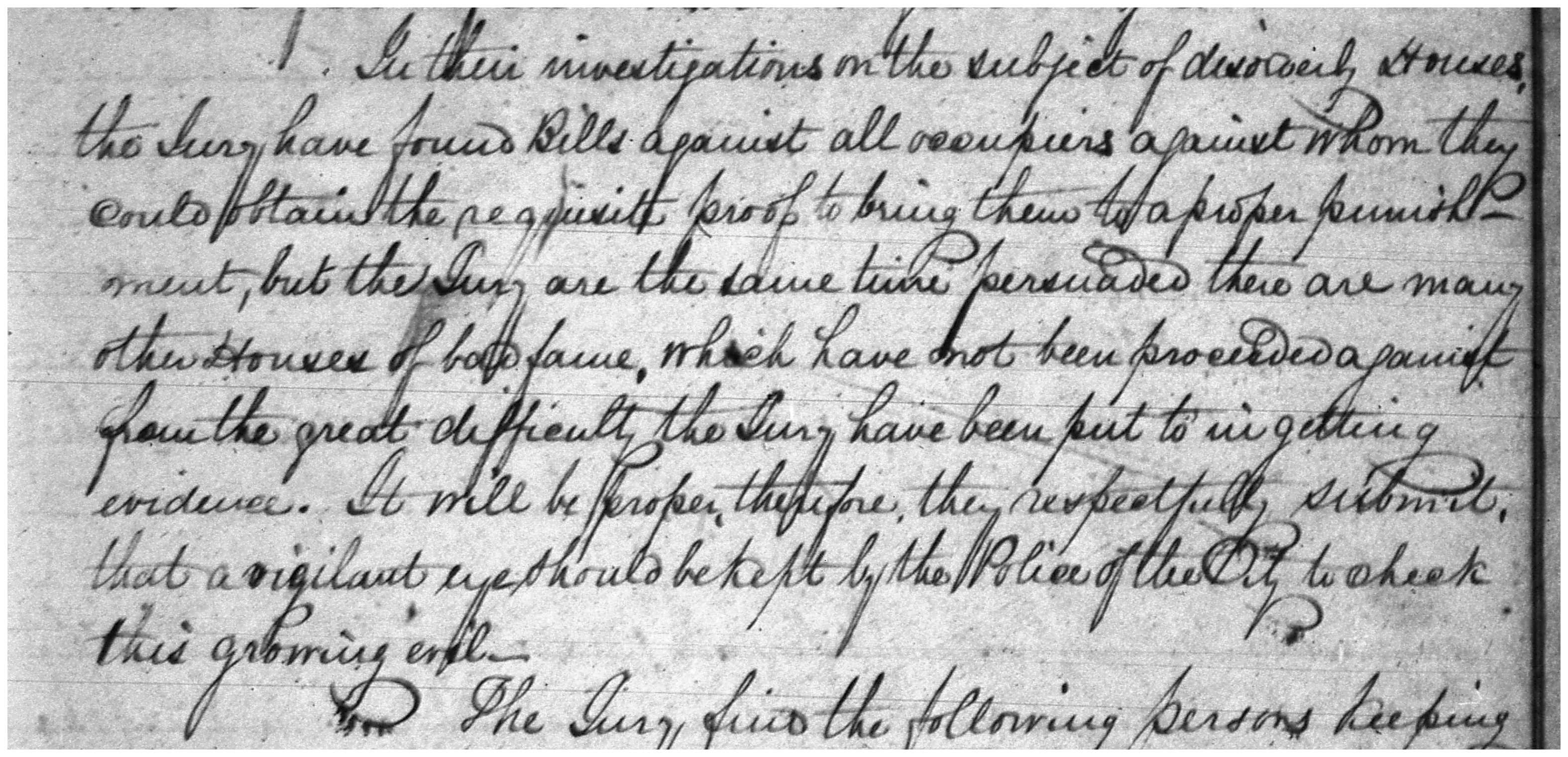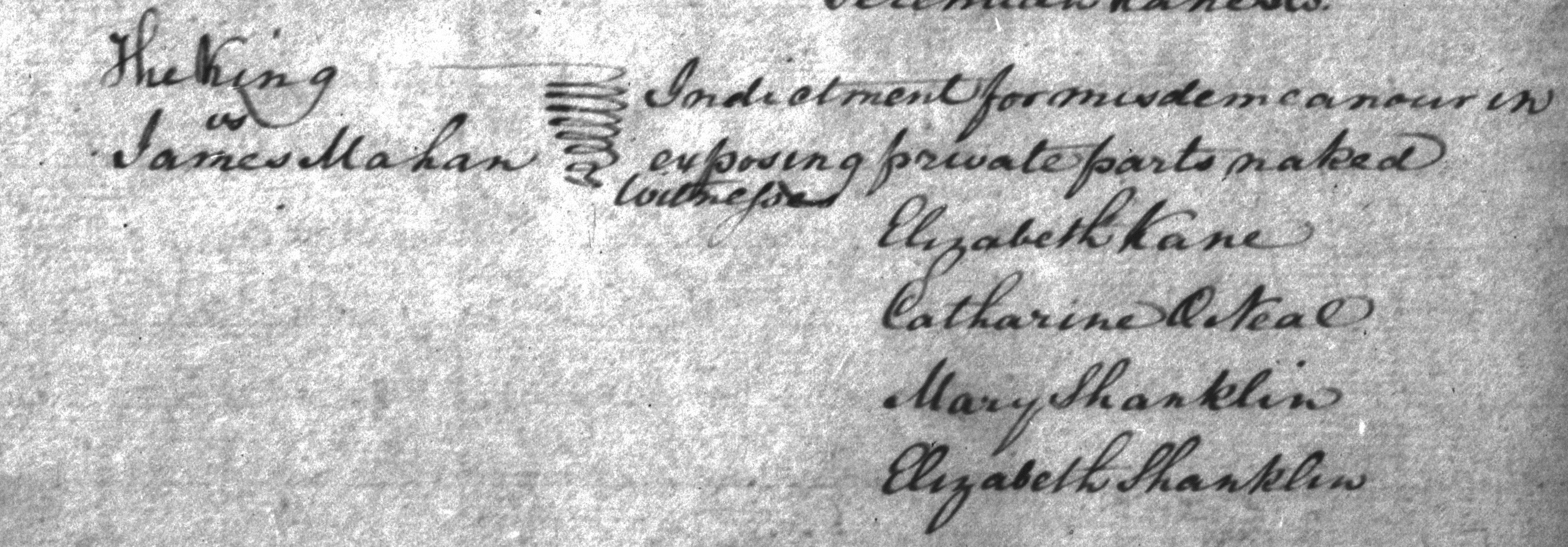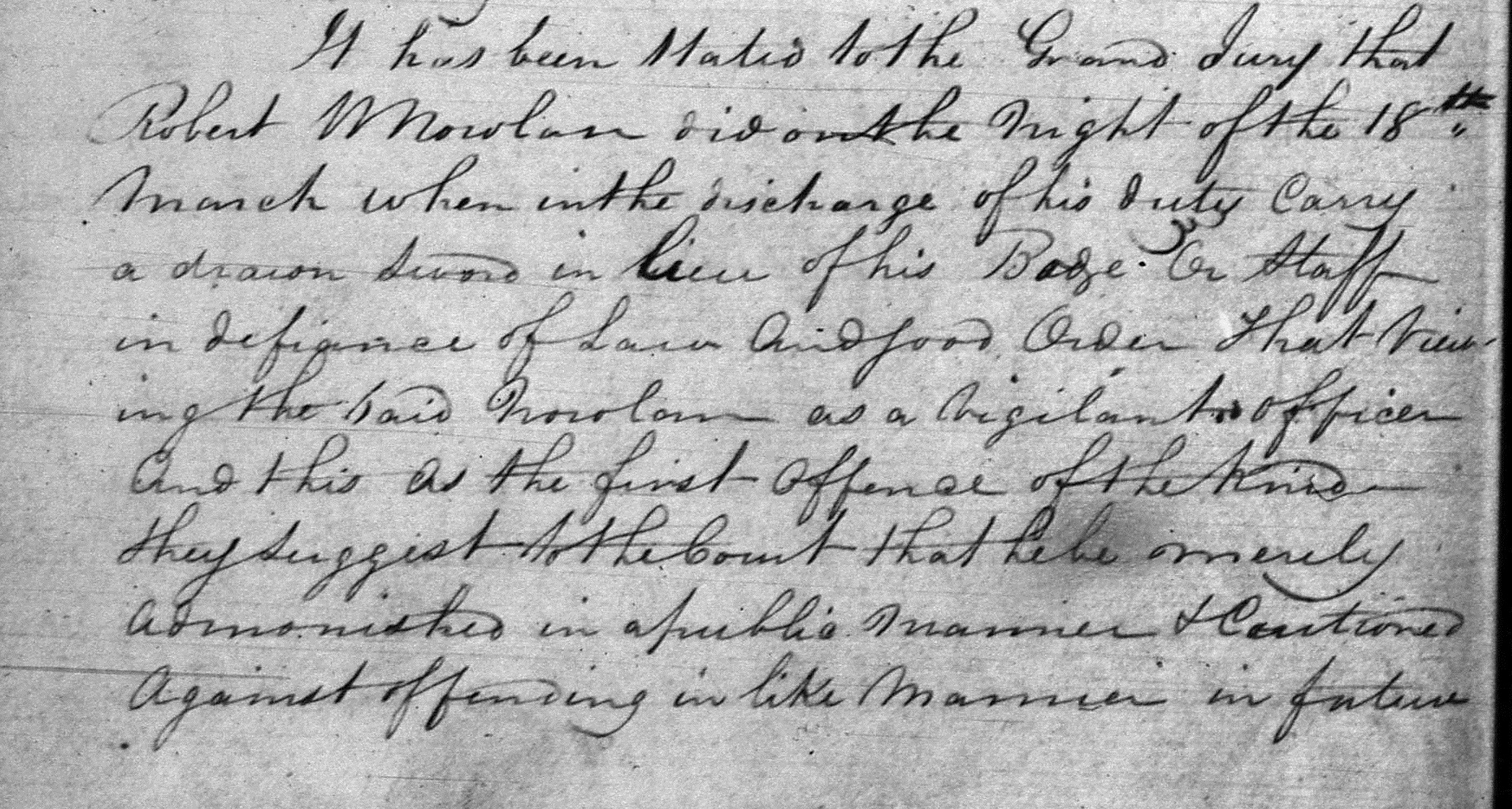- Submitted on
- 0 comments

[Photo courtesy of Wikimedia Commons: licensed under Creative Commons Deed]
Crime was running rampant throughout the busy and filthy streets of New Brunswick’s Saint John County in the early nineteenth century. While the Saint John County Court of General Sessions dealt with matters such as the appointment of parish officers and the individuals granted liquor licenses, the majority of the court records from this time period pertain to crime. Saint John County limits included the City of Saint John and the Parishes of Portland, Lancaster, Saint Martins, and Carleton. The many offenses listed within the Court Records during this time range from petty to extreme. Examples of some of these offenses included, but are certainly not limited to: assault, libel, larceny, rioting, selling liquor without a license, and even bastardy. With events like these happening on a daily basis, the Saint John courts certainly had their hands full!
As Susan Kathleen Leyden states in her book Crimes & Controversies: Law and Society in Loyalist Saint John, the City of Saint John “has a special historic attachment to the law” as it was “founded by men and women who had been the victims of lawlessness.” During the American Revolution, Britain’s loyalists lived in a state of constant insecurity; they were victims of mob attacks and were often driven from their homes. Therefore, we can clearly see why the residents of Saint John County felt a tremendous need to crack down on crime and to establish a clear order. In order to restore peace and security, a strong justice system was needed.
Needless to say, the citizens of loyalist Saint John County were whipped into shape. (Yes—they were literally whipped!). For example: if a person was found guilty for larceny (the taking and carrying away with someone’s property) they could be sentenced to be publically whipped, often 39 times in a row. Such was the case for Joseph McGill who, on March 17th of 1824, was found guilty of larceny and was sentenced to be whipped 39 lashes on his naked back. For more information on larceny in loyalist Saint John County, stay tuned for an upcoming blog post.
Another particularly common crime in Saint John County was the keeping of a disorderly house. This meant that a person kept or maintained a house where people came together to drink, misbehave, and act against the moral values and public decency of the County. The conduct of the house’s inhabitants was a public nuisance and was seen as corruptive. If you ran a brothel or a gaming house, you would certainly have hoped that it remained a secret to the authorities! In September of 1824, the increasing number of disorderly houses was referred to as a “growing evil” that needed to be better regulated by the county’s constables.

New Brunswick Court of General Quarter Sessions of the Peace (St. John County), Minutes : 1812-1839.
“In their investigations on the subject of disorderly Houses, the Jury have found Bills against all occupiers against whom they could obtain the requisite proof…It will be proper, therefore, they respectfully submit, that a vigilant eye should be kept by the Police of the City to check this growing evil.”
Residents of Saint John County could also be indicted for public indecency. Though this crime was rare, there are examples such as on September 5th, 1826, James Mahan received an indictment for “misdemeanor in exposing private parts naked” (presumably to a group of women as all four of the witnesses to this act were female).

Minutes : 1812-1839.
“Witnesses: Elizabeth Kane, Catharine ONeal, Mary Shanklin, Elizabeth Shanklin”
Some crimes were so outlandish that they were difficult to classify. For example, on the night of March 18th, 1822, Constable Robert W. Nowlan was reported carrying a drawn sword in the streets in lieu of wearing his badge.

Minutes : 1812-1839.
“It has been stated to the Grand Jury that Robert W. Nowlan did on the night of the 18th March when in the discharge of his duty carry a drawn sword in lieu of his badge.”
It was not uncommon to see constables being arrested themselves for crimes. However, as in this particular instance, sometimes nothing would come of the crime and the case would be dismissed due to the officer’s loyalty to his duties.
It is clear that nineteenth century Saint John County had its fair share of crime and strict regulations; this is only the beginning of what there is to find! To see more, have a look at our Saint John County Court Records.
Note: All writing samples featured in this post are drawn from The Loyalist Collection.
Additional Source: Susan K. Leyden, Crimes & Controversies: Law and Society in Loyalist Saint John, (Saint John, N.B: Saint John Law Society), 1987.
Bethany Langmaid is a student assistant for the Microforms Unit at the Harriet Irving Library. She is currently in her third year of her Bachelor of Arts degree at UNBF in the English Honours Programme.

Add new comment